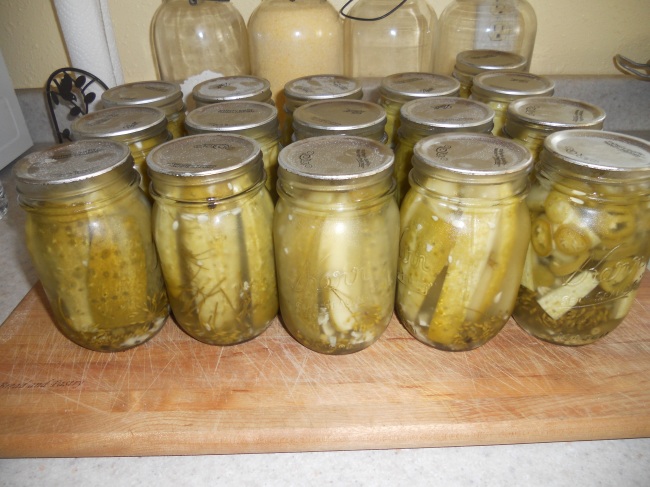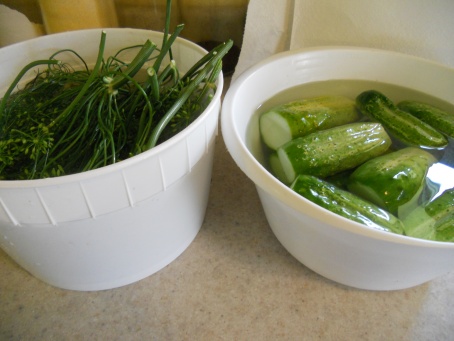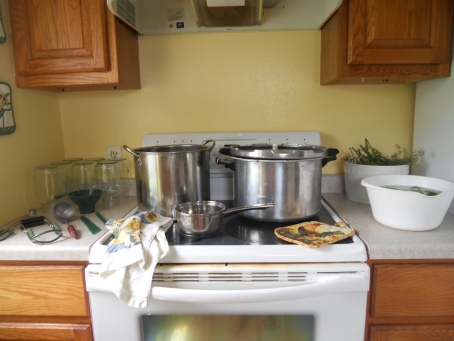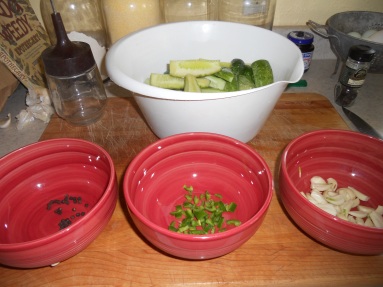 In January of 2012, my family and I moved out of our little Southeast Missouri town and into an old farmhouse on 5 acres. Once here, we made the decision to go self sufficient-ish. So, in March of last year, I decided the first step toward independence from our country’s dangerous and unnatural, just in time food supply was to get some chickens!
In January of 2012, my family and I moved out of our little Southeast Missouri town and into an old farmhouse on 5 acres. Once here, we made the decision to go self sufficient-ish. So, in March of last year, I decided the first step toward independence from our country’s dangerous and unnatural, just in time food supply was to get some chickens!
I had no idea at the time that I would very quickly spiral into chicken fever!
What’s chicken fever? Well, your math changes for one. Here’s a couple lessons….
If you lose or sell one chicken, it must be replaced. Therefore, you must purchase two or more as replacement for one. All chickens count in this case when chicken math is applied– that includes chicks, cockerels, pullets, and roosters.
In counting the number of chickens you have in your possession, only fully mature hens count. You don’t count chicks, roosters, or pullets that haven’t started to lay, thus keeping your “official” flock numbers low and avoiding any suspicion by others that you might have chicken fever to begin with.
Chicken fever means you eat, sleep, and dream chickens. And I really do. I read the word “chicken” in place of other words. “Google Chicken” instead of “Google Chrome” for example. I dream about them. I’ve spent hours and hours in research on breeds, disease, genetics, you name it. I belong to poultry groups on Facebook, where I spend waaay more time than I should, and act as an administrator on one. I now travel 4 hours one way, three times a year, JUST to go to Missouri’s biggest chicken swap where we camp for two or three days. And here at home? The birds rule all. Everything revolves around them.
BUT….
Chickens aren’t for everyone.
http://www.nbcnews.com/health/backyard-chickens-dumped-shelters-when-hipsters-cant-cope-critics-say-6C10533508
It’s true. When you start researching about getting chickens, you’ll see adorable coops, chickens on green grass, and all the benefits that go with keeping chickens– fresh eggs, organic eggs, insect and rodent control, and chickens are oh so easy to keep! Or mostly true….
Here’s what isn’t talked about or is only glossed over.
Ease of Care
 One, chickens ARE easy…. unless you happen to get a carrier illness in your flock. That changes everything. Your cost of operation skyrockets as you’re forced to medicate birds one or more times a year which also makes your eggs inedible for a period of time. That’s if you choose to keep them. Depending on the illness, the state you live in may advise that you put all of your birds down and start over again.
One, chickens ARE easy…. unless you happen to get a carrier illness in your flock. That changes everything. Your cost of operation skyrockets as you’re forced to medicate birds one or more times a year which also makes your eggs inedible for a period of time. That’s if you choose to keep them. Depending on the illness, the state you live in may advise that you put all of your birds down and start over again.
But even if you don’t get a carrier illness, chickens DO get sick sometimes, and finding out the cause and treatment can still be expensive.
While chickens are relatively easy to care for, they DO still require upkeep! You can’t just throw them into a coop and run, feed them, and think that’s all there is to it. They have to be wormed once or twice a year, checked regularly and treated for parasites such as mites and lice. Their roosts have to be scraped, their litter cleaned out and changed one or more times a year.
They have to be let out every morning and cooped at night. I realize that sounds like a pretty obvious given, but I have read from people before who were considering getting chickens and didn’t want to be bothered to step out twice a day to open and shut a door.
Costs
Chickens are fairly cheap compared to other livestock, but not even counting the cost of the coop, fencing for the run, and the chickens themselves, feed and litter and what you put in your chicken medicine cabinet, dewormer and external parasite treatment, brooding equipment, electric to run heat lamps or light a coop in winter all cost money!
Aging Hens/ Roosters
 Hens don’t lay forever. Most lay consistently for a couple years before the number of eggs you’ll get drops off to where keeping a hen and feeding her is no longer financially justifiable. Eventually, many hens stop laying altogether. If you are considering getting chickens, you need to consider this. What is your plan of action when a hen no longer produces eggs if you are the type of person who is unable to drop them in a soup pot? Will you keep the hen until she passes naturally two, three, four years or more after she stops laying and still purchase a replacement, or will you wait? Will you put her up for sale, knowing she will likely become someone else’s dinner?
Hens don’t lay forever. Most lay consistently for a couple years before the number of eggs you’ll get drops off to where keeping a hen and feeding her is no longer financially justifiable. Eventually, many hens stop laying altogether. If you are considering getting chickens, you need to consider this. What is your plan of action when a hen no longer produces eggs if you are the type of person who is unable to drop them in a soup pot? Will you keep the hen until she passes naturally two, three, four years or more after she stops laying and still purchase a replacement, or will you wait? Will you put her up for sale, knowing she will likely become someone else’s dinner?
If you live in a city that doesn’t allow roosters, and you purchase straight run chicks what will you do if you come out with one or more roosters? Roosters can be VERY difficult to get rid of, even when you just give them away! Do you have a plan?
Your Run/ Free Ranging & Landscaping

All those photos of chickens picking through green grass? Ha!
First of all, if you keep your chickens in a run of the recommended size for your number of birds, you can forget the pretty green grass. Chicken poop is HOT. Meaning it is high in nitrogen, and it burns plant life. That pretty green grass will be done and gone in the first year, replaced by dirt and, when it rains, MUD.
My chickens free range on five acres, spend little time in their run, and yet they’ve still managed to leave a patch of dirt in front of their coop and a trail leading to the gate of the run!
Other issues involved with free ranging? You can kiss your well manicured landscaping good-bye unless you go to great lengths to protect it. Mulch? They’ll scratch it up into the yard and all over your pathway. Plants? Uh huh. Finding plants your chickens won’t eat may turn into a major battle. Nearly every plant I have so far must be caged and screened to protect it until the time comes when the plant is too big for the chickens to pick to death. They also like to scratch up the roots when you plant something new!
Our vegetable garden had to be fenced. Despite the effort, an occasional chicken still gets in. Chickens happen to love the color red. Kiss any developing tomatoes goodbye if they find their way into your garden!
My chickens like to hang out on the front porch, and wait for me to come out with treats. That means?
Poop. All over my porch and all over the sidewalks, and the need to constantly spray everything down.
You do have the option of a movable run, called a chicken tractor, but if you’re someone who doesn’t want to be bothered changing water everyday or even opening and closing a door, this would not be an option for you either as you have to move the tractor every day.
 Oh, and if you have young children like I do, and one of them likes to let the chickens in the house, you may occasionally walk into your kitchen to find a bird or two helping themselves to the cat food or just generally inspecting your living quarters, and if you ask them nicely to please leave, they will not be agreeable. Rude!
Oh, and if you have young children like I do, and one of them likes to let the chickens in the house, you may occasionally walk into your kitchen to find a bird or two helping themselves to the cat food or just generally inspecting your living quarters, and if you ask them nicely to please leave, they will not be agreeable. Rude!
I want to see a garden and chickens in every yard!!…. of those well informed and prepared and capable of taking care of their birds.
Some of us LIKE seeing chickens peeking through and crowing at open windows. Some of us look at chicken poop and think, “This is going to be GREAT fertilizer for my garden.” Some of us coo and baby talk our birds as we grunt and scrape and shovel feces and bedding from our coops, and smile in adoration as our birds scratch up and kick the new bedding we just put down right back out of the coop. We sternly chastise, then chuckle, when we find that our flocks have flung mulch or rocks everywhere, we’ve stepped in poop on our front porch, and they’ve picked every single petal off the rose bushes or eaten all the ripening tomatoes in our garden.
There are a lot of us who happily spend, scrape, grunt, shovel, growl and chastise. You may be one of us too! But if any of this sounds intolerable to you, and you cannot make a surefire plan in dealing with aging hens and unwanted roosters, raising chickens may not be for you.
 Chickens belong in a person’s chicken run or yard, and to some, on our plates! Whether you agree with that or not, where they DON’T belong is in animal shelters dependent on people’s donations to care for them! If you purchase them, they are YOUR responsibility! If you’re considering raising a backyard flock, please think carefully and have a plan first.
Chickens belong in a person’s chicken run or yard, and to some, on our plates! Whether you agree with that or not, where they DON’T belong is in animal shelters dependent on people’s donations to care for them! If you purchase them, they are YOUR responsibility! If you’re considering raising a backyard flock, please think carefully and have a plan first.




















